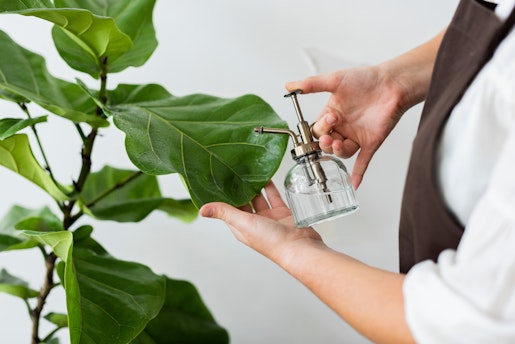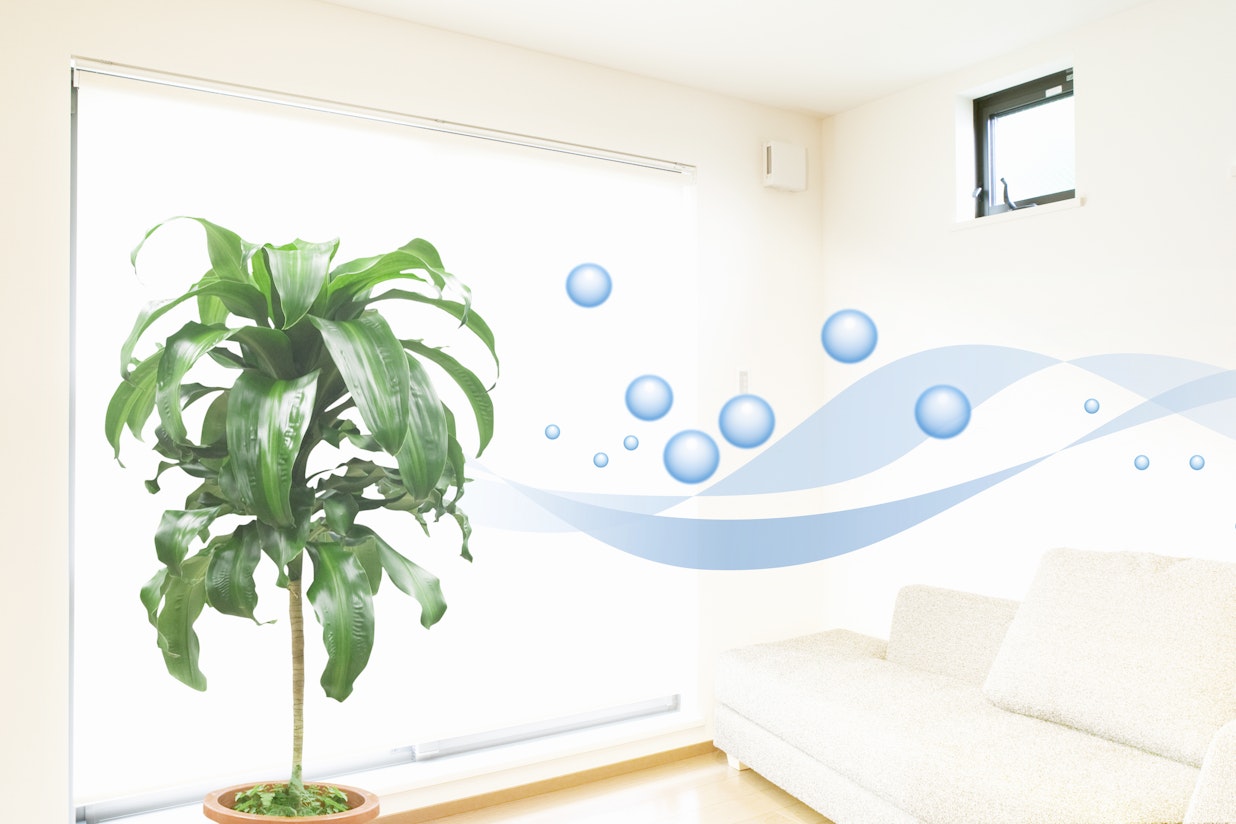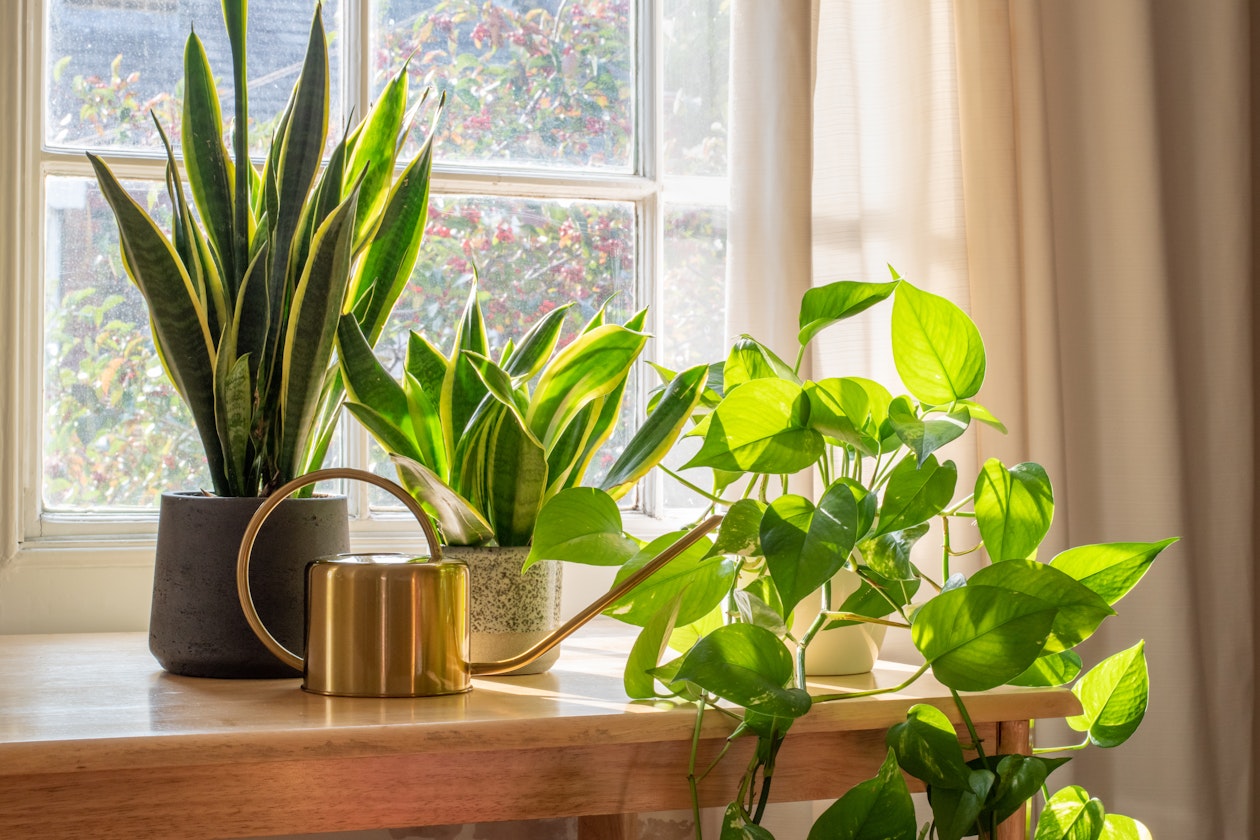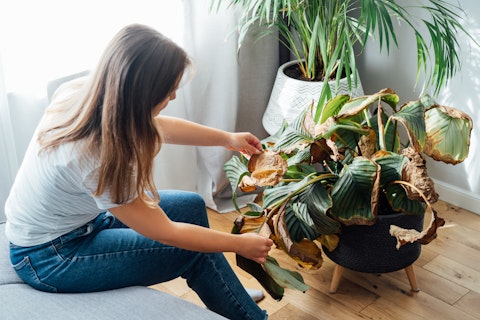
- Home
- Do Houseplants Really Clean the Air?

Often, when talking about houseplants, the concept of air purity is one that seems to circulate again and again. Air purity, while seemingly carrying positive connotations, is actually rather confusing. What is purity? Why was my air not pure in the first place? Do plants actually contribute to the air quality in my home? These questions are frequently asked in houseplant communities and thus, this blog post was concocted so that the answers can be easily found!
What is air purity referring to?
“Pure air”, simply put, refers to air that is closest to that of the parts of the natural world where humans have existed for hundreds of thousands of years before today. That is; air that has a good balance of natural compounds that can flow freely between the outside world and the insides of our lungs, as biology intended. In reality, this ‘perfect purity’ is an ideal. Resultantly, the purity of air is measured by how close to perfect purity it is, as it is understood that due to functional characteristics of the planet, our air has always, and will always be changing.
Generally speaking, enquiry regarding air purity in relation to houseplants is likely referring to it on a smaller scale. Purity of air is usually concerned with two major players: Oxygen and VOC’s. Oxygen being the super cool, super useful element that provides us and all other animals on the planet with the means to fulfill the boundless conditions we need to function. VOC’s are ‘Volatile Organic Compounds’, which are definable as organic compounds that have a high vapour pressure at room temperature, such as Formaldehyde, Trichloroethylene and Benzine. Some of these can be considered hazardous to health in large quantities. In terms of these two components, the ideal air quality would have a well-balanced oxygen content and a minimal amount of VOCs.

Why is my air impure?
In the grand scheme of things, the average household hasn’t got much to worry about. No standard home contains enough VOC emitters to cause anyone serious health problems. But there are a few varying factors. The presence of cigarette smoke can contribute to levels of VOCs in a household, further the proximity to large industrial areas, factories or busy roads. But in reality, all modern homes produce a small amount of VOCs in the use of a variety of appliances and household necessities as a byproduct of the good that they give us! A few examples are: paint, aerosol sprays, cleansers/disinfectants, perfumes, glues, copiers, printers, ovens & hob cookers and air fresheners, amongst others. The effects of levels of VOCs experienced in a home are mostly uninvestigated, likely due to the minimality of their impact. It is in industrial settings where these compounds cause significant damage. However, a home with minimal VOC content is certainly the ideal, and is appealing to most.
What plants help improve the air quality of my home?
Traditionally, people cite certain subspecies of Dracaena or snake plants (Sansevieria) to be some of the most productive air-purifying plants. Further, plants from the Araceae family such as Monstera, Philodendron or Aglaonema are generally understood to provide the same. This is due to the large, or dense foliage these plants tend to have. More foliage/bigger foliage = more photosynthesising cells and greater chemical productivity. With that in mind, we bring you eloquently to the most controversial problem in this subject…
Do plants actually improve the air quality in my home?
Frustratingly, and as is always the case in any kind of hobbyistic scientific inquiry, there is no ‘yes or no’ answer. However, deduction can bring us to a fairly conclusive idea: that is ultimately, it seems unlikely. It is hard to say whether the idea of air-purifying plants arose and was widely believed or proved unfalsifiable, or whether it was used as an industrial tool or sales technique. But it is for certain that the understanding of air purification as a result of indoor horticulture has certainly been exaggerated.The idea itself can once again be broken down into two areas of understanding, the same as before: Oxygen and VOCs.

Oxygen
It is true that plants draw in CO2 from the air, and store the carbon, or redirect it for growth, expelling the oxygen back into the atmosphere. So it is with certainty that we can say that plants do contribute to the levels of oxygen in a home. But it is when considering the scale of this that we start to question their validity as ‘air-purifiers’ in this regard. It is noted that although great photosynthesizers and respirators, vascular plants contribute somewhere between 1-3% of the earth’s oxygen (The majority coming from Algae and other Thallophytes). The composition of air on this planet is approximately: 78% Nitrogen, 20.9% Oxygen, 0.9% Argon and 0.03% Carbon dioxide, with a remainder of 0.17% of the air consisting of a variety of other gasses in less volume. A medium sized plant produces approximately 5ml of Oxygen an hour. The average human requires 15L of Oxygen an hour, which means that effectively, a single medium sized house plant produces less than 0.05% of the necessary oxygen. If we consider this, alongside the fact that a large majority of plants produce significantly less Oxygen during the night, it is likely that a single household would need between 350-400 medium-sized houseplants in order to produce enough Oxygen for a single person. However, an increase is still an increase, and the plants do provide better oxygenation, just at a significantly smaller rate than the industry has suggested in the past.
VOC’s
Interestingly, the discourse on plants as removers of VOCs from the home can all be traced back to one study from 1989 called the NASA Clear Air Study. It was conducted by NASA in association with the ALCA (Associated Landscape Contractors of America). In the study, a plant was sealed in an airtight box of 1m squared and a single sample of a VOC was injected into it, and then measured afterwards. The study seemed to suggest that the concentration of VOCs in the box was reduced after a short period of time, concluding that plants contribute to the removal of them from the air. At first glance this would seem pretty open-and-shut, however; since its publication there has been a huge amount of criticism.
In the NASA study, the plant was placed in an empty, airtight container, which in no way mirrors the home environment, which is much larger, allows for much more airflow and is full of items such as furniture. Secondly, the study was conducted using a single injection of a single VOC, which by no means mirrors the conditions of a household in which various VOCs are being emitted from various places at various densities throughout the day and night. Lastly, but not exhaustively, the study did not account for the fact that VOCs can cling to surfaces, and to a certain degree the airborne VOC levels after any period of time would be decreased as some of it clings to the surface of the plant. Since the NASA study, no research body has managed to reproduce the same results.

Get to the point!
All this considered, leads the notion of ‘Pure-Air plants’ to evidently be rooted in falsehood. Not necessarily for any deceptive or malicious intent, but more by means of a misunderstanding. The study conducted by NASA was not intended to divulge the productivity of houseplants as air-purifiers in the average household. It was devised more to understand the possibilities regarding air purification in space stations and other non-atmospheric environments. It was the translation of these results into the relevance of the everyday human being that led to this misunderstanding. However, this is not to say that houseplants have no air-purifying properties. It is simply that at the moment, there is little to suggest that they are any more effective than allowing inside-outside airflow. Other studies have started to explore the relationships between plants and air more and more, and our understanding is growing year by year. Hopefully, with this in mind, we will soon be able to confidently answer the question: ‘Do plants purify my air?’, But for now, keep plants for the emotional, aesthetic and regulatory benefits, and crack open a window!
Bibliography.
Adji, F.F. et al. (2014) ‘Effect of plant-mediated oxygen supply and drainage on greenhouse gas emission from a tropical peatland in Central Kalimantan, Indonesia’, Soil Science and Plant Nutrition, 60(2), pp. 216–230. Available at: https://doi.org/10.1080/00380768.2013.872019.
Asnani, B. and Singhvi, R. (2014) ‘Improving indoor oxygen in residential buildings using houseplants’, ASIAN JOURNAL OF HOME SCIENCE, 9(2), pp. 500–504. Available at: https://doi.org/10.15740/HAS/AJHS/9.2/500-504.
Larkum, A.W.D., Grossmann, A.R. and Raven, J.A. (eds) (2020) Photosynthesis in algae: biochemical and physiological mechanisms. Cham: Springer (Advances in Photosynthesis and Respiration, volume 45).
Stewart, C.N., Abudayyeh, R.K. and Stewart, S.G. (2018) ‘Houseplants as home health monitors’, Science, 361(6399), pp. 229–230. Available at: https://doi.org/10.1126/science.aau2560.
Walsh, C., Dudney, S. and Copenhaur, E.D. (1984) Indoor Air Quality. Boca Raton: CRC Press Inc.
Wang, W. and Doi, J. (eds) (1996) Volatile organic compounds in the environment. Symposium on Volatile Organic Compounds (VOCs) in the Environment, West Conshohocken, Pa: ASTM (STP, 1261).
Wolverton, B.C., Johnson, A. and Bounds, K. (1989) Interior Landscape Plants for Indoor Air Pollution Abatement - Final Report, September 15, 1989. Stennis Space Center: NASA & ACLA.
Jonathan Davies
Jonny has worked at Root since May 2023. His love for plants was inherited initially from his grandparents and parents, but really took off once he moved into his own place, where he started picking up small plants and was fascinated by watching how they grow and change over time. Jonny has a degree in Archaeology and Classics from the University of Sheffield, and a masters in Egyptology from Swansea University, where he primarily focused on garden culture in the ancient world, which he has managed to extend to a PhD thesis in the University of Liverpool, where he has been able to combine his love for plants with his love for ancient language and culture. Jonny loves being in the natural spaces around North Wales and Cheshire where he used to go growing up, and often spends hours examining the plants and trees, and kicking up the leaf litter searching for mushrooms and insects. He is fascinated most by plant biology, taxonomy and learning about ecosystems and interactions between plants and their environmental counterparts, and enjoys tending to his varied array of houseplants, and ongoing ‘plant projects’, such as growing plants from seeds and creating living epiphyte displays. Aside from his green thumb, his other interests include: art, reading, listening to and playing music in the company of his cats, Spooky and Boo.
More by Jonathan DaviesRelated Articles
View all articles
